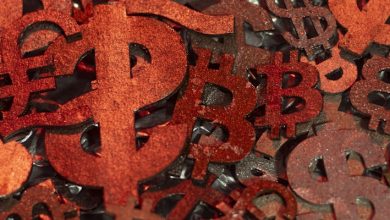The Role of Inflation and Deflation in Tokenomics

- Understanding the Basics of Inflation and Deflation in Tokenomics
- The Impact of Inflation on Token Values and Purchasing Power
- Strategies for Mitigating Inflation Risks in Tokenomics
- Exploring the Relationship Between Deflation and Token Price Stability
- The Role of Deflation in Tokenomics and Its Effects on Market Dynamics
- Comparing Inflationary and Deflationary Tokenomic Models
Understanding the Basics of Inflation and Deflation in Tokenomics
Tokenomics involves understanding the basics of inflation and deflation in the context of cryptocurrency. Inflation refers to the increase in the supply of a token, leading to a decrease in its value over time. On the other hand, deflation is the decrease in the token supply, which can result in an increase in its value.
When a token experiences inflation, it can lead to a decrease in purchasing power as more tokens are available in circulation. This can result in price increases for goods and services, as the value of the token diminishes. In contrast, deflation can lead to an increase in purchasing power, as the token becomes more scarce and valuable.
Understanding the dynamics of inflation and deflation in tokenomics is crucial for investors and users alike. By being aware of how these factors can impact the value of a token, individuals can make informed decisions about buying, selling, or holding onto their assets. It is essential to keep track of the token’s supply and demand dynamics to anticipate potential changes in value.
The Impact of Inflation on Token Values and Purchasing Power
One crucial aspect to consider in tokenomics is the impact of inflation on token values and purchasing power. Inflation refers to the general increase in prices of goods and services over time, which erodes the purchasing power of a currency. This phenomenon can also affect token values within a decentralized ecosystem.
When inflation occurs, the value of tokens may decrease as the cost of goods and services rises. This can lead to a reduction in the purchasing power of token holders, making it more challenging to acquire the same amount of goods or services with their tokens. As a result, inflation can have a detrimental effect on the overall value of tokens in circulation.
Tokenomics projects must carefully consider the potential impact of inflation on their token economy. By implementing strategies to mitigate the effects of inflation, such as adjusting token supplies or introducing mechanisms to stabilize token values, projects can help maintain the purchasing power of their tokens and ensure the long-term sustainability of their ecosystem.
Strategies for Mitigating Inflation Risks in Tokenomics
One of the key challenges in tokenomics is managing the risks associated with inflation. Inflation can erode the value of a token over time, leading to a loss of purchasing power for holders. To mitigate these risks, various strategies can be employed to help maintain the value of the token and protect investors.
One effective strategy is to implement a cap on the total supply of tokens. By limiting the number of tokens that can be created, the value of each token is more likely to remain stable or increase over time. This can help to counteract the effects of inflation and provide investors with a more predictable return on their investment.
Another approach is to implement a mechanism for burning tokens. This involves permanently removing tokens from circulation, effectively reducing the total supply and increasing the value of the remaining tokens. By regularly burning tokens, the tokenomics system can help to offset inflationary pressures and maintain the value of the token.
Furthermore, implementing a staking mechanism can also help to mitigate inflation risks. By allowing token holders to stake their tokens in exchange for rewards, the system incentivizes investors to hold onto their tokens rather than selling them. This can help to reduce selling pressure on the token and support its value over time.
In conclusion, managing inflation risks in tokenomics requires a proactive approach and the implementation of various strategies. By capping the token supply, burning tokens, and implementing staking mechanisms, tokenomics systems can help to protect investors from the erosive effects of inflation and ensure a more stable and valuable token ecosystem.
Exploring the Relationship Between Deflation and Token Price Stability
Exploring the relationship between deflation and token price stability is crucial in understanding the dynamics of tokenomics. Deflation occurs when the supply of tokens decreases, leading to an increase in the value of each token. This can result in greater price stability as the scarcity of tokens drives up demand. However, excessive deflation can also lead to a decrease in overall economic activity as individuals hoard tokens in anticipation of future price increases.
Token price stability is essential for creating a reliable store of value and facilitating transactions within a token ecosystem. By maintaining a balance between inflation and deflation, token issuers can help ensure that the value of their tokens remains relatively stable over time. This can enhance confidence in the token economy and attract more participants.
It is important for tokenomics designers to carefully consider the implications of deflation on token price stability. By implementing mechanisms to counteract excessive deflation, such as burning tokens or implementing a supply cap, issuers can help maintain a healthy balance in the token economy. This can contribute to a more stable and sustainable ecosystem for all participants.
The Role of Deflation in Tokenomics and Its Effects on Market Dynamics
Deflation plays a crucial role in tokenomics by impacting the supply and demand dynamics of a token. When a token experiences deflation, its value tends to increase over time as the circulating supply decreases. This can incentivize holders to retain their tokens rather than sell them, leading to decreased selling pressure in the market.
Furthermore, deflation can also contribute to the scarcity of a token, making it more desirable for investors. As the token becomes rarer, its perceived value may increase, driving up demand and prices. This positive feedback loop can create a self-reinforcing cycle that benefits early adopters and long-term holders.
However, it is essential to note that deflation can also have negative consequences for tokenomics. A rapid decrease in the token supply can lead to liquidity issues, making it challenging for traders to buy and sell the token at fair prices. Additionally, deflation may discourage spending and investment in the token economy, as individuals may hoard their tokens in anticipation of future price increases.
Comparing Inflationary and Deflationary Tokenomic Models
Inflationary and deflationary tokenomic models are two contrasting approaches to managing the supply and demand dynamics of a token. In an inflationary model, the token supply increases over time, leading to a decrease in its purchasing power. This can be beneficial for encouraging spending and investment in the token ecosystem. On the other hand, a deflationary model involves reducing the token supply, which can lead to an increase in its value over time. This scarcity can incentivize holding onto the token as a store of value.
When comparing these two models, it is essential to consider the impact on the token economy. In an inflationary model, there may be concerns about devaluation and loss of purchasing power over time. However, this can also stimulate economic activity and circulation of the token. In contrast, a deflationary model may lead to hoarding and reduced liquidity in the market, but it can also create a sense of scarcity and value appreciation for the token.
Ultimately, the choice between an inflationary and deflationary tokenomic model depends on the goals and objectives of the token project. Some projects may prioritize price stability and usability, while others may focus on creating a store of value and long-term value appreciation. By understanding the implications of these models, token issuers can design a tokenomic system that aligns with their vision and objectives for the project.



